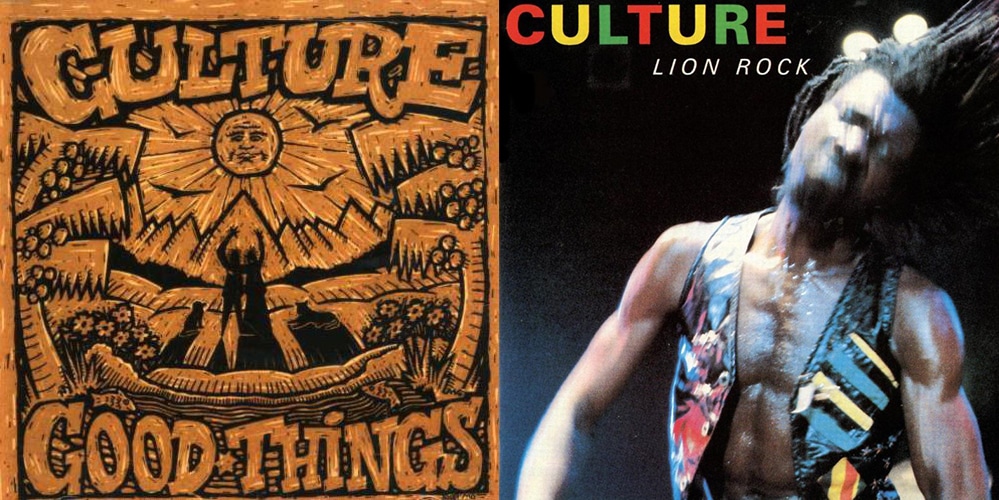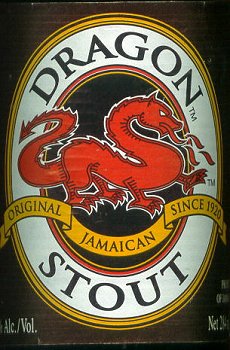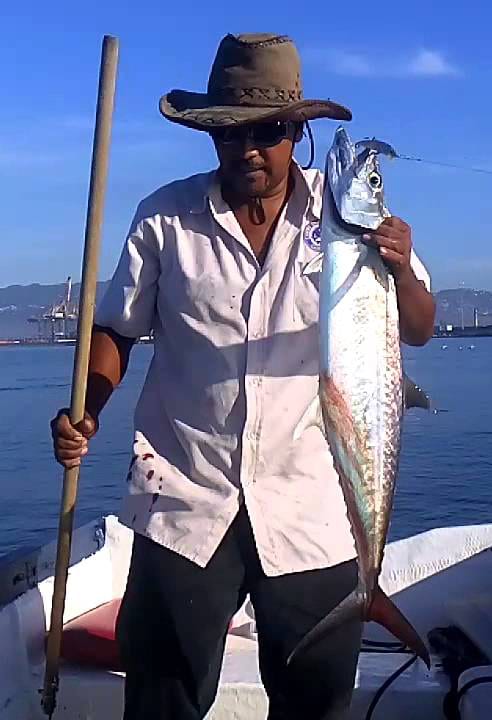Music is a powerful medium. We’ve seen it trigger visceral reactions in toddlers who, bereft of self-consciousness, dance enthusiastically without even realizing it when the music moves them. For those of us who have lived a bit longer, often a song or an album can instantly transport us back in time. This force can be so compelling, in fact, that it’s been shown to spark the memories of Alzheimer’s patients and those suffering from dementia.
What follows is the story of how two albums from the legendary vocal trio, Culture, consistently invoke meaningful memories for me.
Culture was founded in 1976 by lead singer and songwriter, Joseph Hill and as one of the most prolific roots reggae groups, would go on to record 21 studio albums through the turn of the century, plus a collection of dub albums and live recordings. Joseph Hill passed away in 2006 but the band continues to tour with Hill’s son Kenyatta taking over the helm, joined by longtime vocalists Albert Walker and Telford Nelson.
Culture was known for upbeat music with conscious lyrics, which often quoted Biblical scripture and contained tenets of Rastafarianism and themes of spirituality, love, unity, oppression and social justice. Few artists have served to further reggae music internationally as much as this esteemed group.
Part 1: Good Things
I was first introduced to reggae music during my late teens via a homemade cassette tape of Bob Marley and Peter Tosh. I felt immediately drawn to the music and intrigued by a genre I knew nothing about. Not long after, as if by fate (but now recognizing it as Jah work), my family took a Caribbean cruise vacation which included a scheduled stop in Ocho Rios, Jamaica.
With a budding interest in reggae, after discovering that many of the ship’s staff were from Jamaica, I quickly befriended several of them, badgering them with questions about reggae and picking their brains for information about the Rastafarian way of life and Jamaican culture. When the ship docked in Ocho Rios and the rest of the passengers debarked for Turtle Beach, Fern Gully and Dunns River Falls, I went downtown in search of a music shop my new friends had recommended armed with a list of artists to investigate which included Dennis Brown, Gregory Isaacs, Israel Vibration and Culture. I didn’t have a huge selection to choose from as the shop mainly offered only the more recent recordings from each artist. Still, decisions had to be made, and not having any other criteria with which to influence me, I went with the albums whose cover art most captivated me.
I enjoyed all of the music I purchased that day but one album really stood out: Good Things by Culture. I instantly loved it and would listen to that album relentlessly over the next several years. The cheerful music coupled with the wise lyrics of the late Joseph Hill always lifted my spirits and essentially ignited my new love of reggae into a lifelong passion that has driven me for over 30 years.
Still today, even a glance at the album cover instantly conjures up joyful nostalgic feelings. I can picture myself listening to the album, singing along gleefully, as I let the artwork wash over me—a monochrome beige cover that featured a black ink drawing of two people, arms around each other, waving at an anthropomorphized sun setting over the mountains, flanked by a cat and a dog, surrounded by flowers and palm trees as birds fill the sky.
While listening to this album brings back warm feelings of my reggae adolescence, one special memory pertaining to this collection of songs always stands out. I spent my final semester of college participating in a program called Semester at Sea. For about 100 days, I lived and attended classes aboard a ship as it sailed around the world from Vancouver to New Orleans, stopping in ten different countries along the way. Classes would cease while the ship was docked, and depending on our itinerary, we would have 3-6 days to go wherever and do whatever we wanted before having to return to the ship to depart for our next destination.
One of my more memorable experiences occurred during our visit to Cape Town, South Africa. Within the first hour of setting foot on dry land, while walking through the streets with a friend, we saw a Rastaman coming our way. I greeted him amicably with something like “Wha gwan breddah?” and he returned my salutation with a big smile. From my accent he knew I was a foreigner, and at the time, merely a few months after the dissolution of Apartheid, South Africans were not accustomed to receiving many visitors, especially Americans. He introduced himself as Reggie and I explained to him what had brought us to South Africa. He seemed quite excited to have the opportunity to meet people from another country and offered to show us around the city.
With Apartheid having recently been abolished, racial tensions continued to permeate South Africa and while Cape Town was known as the most liberal city in the country, we had been profusely warned to avoid traveling alone, stay alert, be cautious and remain wary of people meaning harm. (In fact, as it turned out, several of my shipmates ended up getting mugged during our time there.) As Reggie led us down the street, these warnings nipped at my sense of security, and I wondered if we were making a bad decision that could end up putting us in peril. Chicken merry, hawk deh near.
Soon our conversation turned to reggae. I asked him about his familiarity with different artists, and one of the first I mentioned was Culture. He immediately launched into a verse of “Hand a Bowl,” which is the first track on Good Things. Next thing I know, we were singing songs off of the album together in harmony as we made our way down the avenue. Knowing Reggie was an avid fan of Culture eased my anxiety and diffused any threads of suspicion that I may have had.
The rest of the day, Reggie took me to a variety of different places to introduce me to his friends, including a tattoo parlor, a shop called Gaztetxe that made leather products and a loft that contained the offices and factory of a surf clothing/shoes line called Thing-Fish. Reggie was certainly dialed in to the bohemian subculture of Cape Town, as most of his friends seemed to be artists, craftsmen, musicians and/or surfers. All of the people he introduced me to were extremely hospitable, and I left the country with a backpack full of clothing, shoes, music and other keepsakes that had been given to me.
My time spent in Cape Town will always remain some of my favorite travels and my love of reggae music led to those experiences.
Part 2: Lion Rock
Any song from Culture’s album Lion Rock instantly seats me on the worn leather seats of the navy-blue Toyota beater wagon that transported my three friends and I around Negril, Jamaica, several years after my travels to Cape Town.
The vehicle belonged to our driver, Tony, who we had hired for $30 a day (plus gas) instead of continually taking different cabs every time we needed a ride. Tony’s music collection consisted of one cassette tape, which played on an incessant loop. I instantly recognized Joseph Hill’s distinctive vocals, but although I had most of Culture’s albums in my personal collection by this time, none of the songs on Lion Rock sounded familiar to me. I asked Tony for the title and he momentarily popped the cassette out to show me.
Before the days of streaming music, when people had to purchase the music they wanted to listen to on vinyl, cassette or compact disc, sometimes it was difficult to find certain albums. Up to this point, I had never seen Lion Rock in any music shop. I hadn’t even known it existed. Of course, by the time I left Jamaica at the end of the week, this album would be permanently embedded in my consciousness.
Whereas the sanguine Good Things mostly celebrates life, Lion Rock contains a more subdued tone and solemn message, offering encouragement to sufferers through the virtue of faith. Despite its weightier approach, the album is not without buoyancy, and it continues today to bring back fond memories of this impactful trip to the island of Jamaica.
The comprehensive details of my vacation escape me because it was a long time ago and, well, let’s just say we didn’t skimp on the Dragon Stout, Lamb’s Bread and mushroom tea. However, I will never forget one experience we shared during this visit.
One day, as we strolled along 7 Mile Beach enjoying the sights and warm Caribbean water lapping at our feet, a skinny dread approached us. Wearing nothing but a pair of cut-off jeans, he had seriously nappy hair and bloodshot eyes. Like everyone else, he tried to sell us ganja, but we told him we bought more than we could ever smoke before we even left the airport upon arriving in Montego Bay.
“Wha ‘bout lunch, mon?” he asked. “Mi cook fe yuh!”
We told him we had already eaten lunch.
“Suppa!” he insisted. “Come back ‘roun suppa time. I mek yuh ital food a mi restaurant,” he said, gesturing up the sand from the surf. Following his hand, we spotted a flimsy wooden shack next to a weathered picnic table.
This seemed intriguing.
“What can you make us?” we asked.
“Anyt’ing mon! Anyt’ing yuh wan! You wan jerk chicken?”
As much as we all loved jerk chicken, we had had our fill for the time being.
“How about lobster?” we asked.
“Yah mon! I catch yuh some lobster an cook it fe yuh!” he promised. “Come back roun’ six.”
Six o’clock rolls around and Tony brings us back to the shack on the beach. We spotted a tiny charcoal grill behind the shack and noticed a little red cooler alongside.
“Come yah!” he beckoned. We all took seats around the picnic table and he brought us lukewarm Red Stripes.
“So what yuh wan eat?”
“I thought you said you were going to catch us some lobsters?” we asked.
“No mon, no luck wit dat.”
“How about grouper? Do you have grouper?”
“No mon, no grouper today. How ‘bout kingfish mon?”
Kingfish is not known to be the best eating fish.
“Do you have Mahi Mahi?”
“No mon, no Mahi today.”
“Well what do you have?”
“Mi haff kingfish mon.”
And so kingfish it would be.
Downgrading from a much-anticipated lobster dinner was a little disappointing, but we were drinking Red Stripes on a Jamaican beach as the sun inched its way toward the horizon, so our spirits remained high.
Speaking of high spirits, our host next pulled out a cigar-sized spliff and announced “Mi like ta give all mi guests a lickle appetizer first.” He lit the spliff and passed it to my friend. It circulated amongst us for the next ten minutes. Or was it a half hour? After it came to me a few times, I couldn’t keep track of time.
The time we spent waiting for our food devolved to hazy mayhem—heavy eyelids reducing aperture to slits, physical and mental imbalance, sloth-like lethargy and oxygen-deprivation from uncontrollable laughter. At one point all of this led me to fall backwards off the bench, shoulders in the sand, feet in the air. Lacking the fortitude and physical prowess to recover, I remained in this infantile position for an undetermined amount of time, like an overturned insect who can’t right himself.
Finally, with the assistance of my friend, I retook my place at the table in time to be served our much-anticipated dinner. Our host placed a plate in front of each one of us. At first, there was silence. Then, our gazes slowly lifted from our plates to make eye contact with each other, before we all burst into hysteria. Our host had basically taken two wholly intact kingfish, grilled them, then split them halfway between the head and tail with his machete and squeezed what looked like a dollop of ketchup on top. While there was nothing inherently wrong with the meal, the sheer lack of any sort of culinary preparation truly made for a memorable experience.
We made sure to remember the recipe:
- Place whole kingfish on grill.
- At some point, turn fish over to cook other side.
- Cut kingfish in half with one whack of machete.
- Add a squirt of ketchup.
- Garnish (or not) and serve.
Removing the head and tail left much less food to consume, and given the amount of ganja we inhaled as an appetizer, our half-fish meal provided far less sustenance than we needed. Nevertheless, it made for a good story, one we will never forget.
Fast forwarding to the end of our stay, our reliable driver Tony brought us back to Montego Bay airport. Upon exiting the vehicle, noting my enjoyment of our Culture soundtrack throughout the week, Tony kindly gave me the cassette to bring home, the perfect memento to represent my experience.
Years later while at the Woodbury Reggae Festival, I had the opportunity to meet Joseph Hill. I told him how much his music had meant to me and he responded, heartfelt, “Dis is why we make the music, for people like you.” A truly humble man, his gracious reaction only deepened my love of the group.
Good Things and Lion Rock. Are these the best albums Culture has to offer? Who’s to say and does it matter? What is clear is that music is deeply personal and potent, from our earliest days to our final days and all the moments in between.
[gravityform id=”36″ title=”false” description=”true”]




